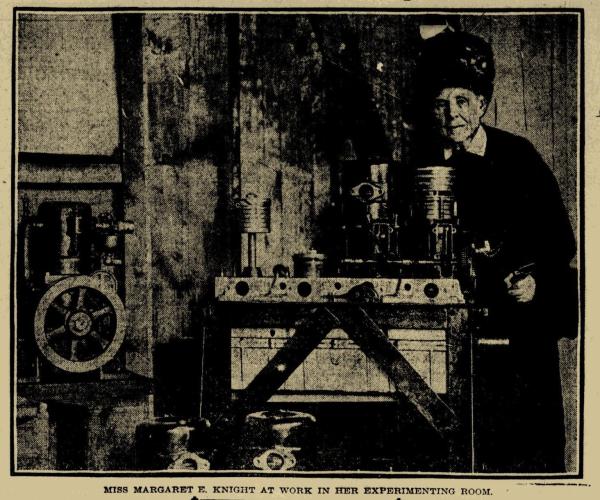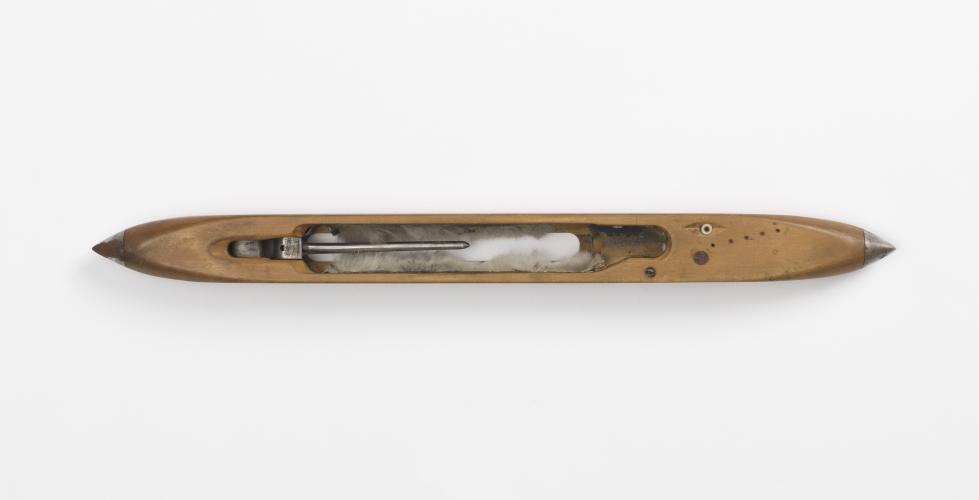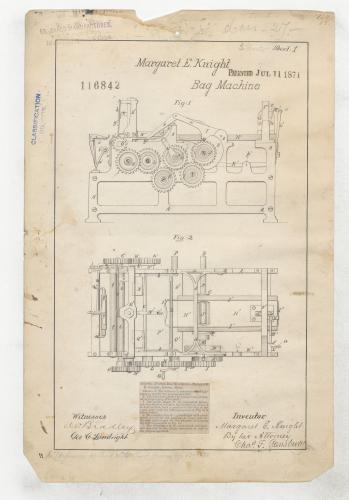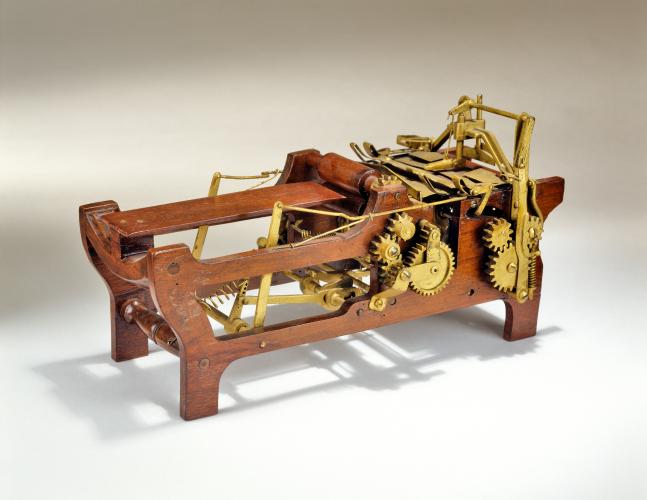
Rare newspaper photograph of Margaret E. Knight from the Boston Sunday Post, Marach 31, 1912. Courtesy the Newspaper Archives.
Margaret E. Knight (1838-1914) was an American inventor best known for a machine that mechanized the manufacturing of flat-bottom paper bags, which had previously been produced by hand. Flat-bottomed paper bags transformed retail commerce and became indispensable to workers and students carrying a “brown bag” lunch, yet its ubiquity makes it easy to forget—along with the name of the person responsible for its production.
As a child, Knight was more interested in tools than dolls and frequently made or improved toys for her brothers and other children. She also began working with machinery at a young age. Born in Maine, her family relocated to Manchester, New Hampshire after the death of her father so that her mother and two brothers could work in the cotton mills. Knight claimed that her first invention came soon after she began working in the mills at age 12. After witnessing a steel-tipped shuttle fly out of a loom and seriously injure a worker, a common hazard in the mills, she devised a shuttle-restraining device. The device was placed on all the looms in her mill and before long other mills in the area adopted its use.

Example of a steel-tipped shuttle from the 19th century. Courtesy Cooper Hewitt Smithsonian Design Museum, Gift of Mrs. DeWitt Clinton Cohen.
Knight left the mills in her late teens due to poor health. As an adult she gained valuable experience working in upholstery, photography, engraving workshops, and home repair. She developed skills and gained a deeper understanding of processes with each new experience. Around 1867, Knight began working for the Columbia Paper Bag Company in Springfield, Massachusetts and soon began developing a machine that could cut, fold, and paste flat-bottom paper bags, eliminating the time-consuming labor otherwise required to make them by hand.

Page from Margaret E. Knight’s patent application for a paper bag machine with patent number and award date stamp. National Archives and Records Administration, Records of the Patent and Trademark Office, NAID 176530307.
Knight worked on her machine for over two years, eventually perfecting a prototype in wood before hiring a machinist to fabricate the working model needed to apply for a patent. While under construction, another machinist, Charles Annan, stole Knight’s design and submitted it as his own to the U.S. Patent Office in Washington D.C. Upon learning of the fraudulent claim, Knight initiated a patent interference suit against Annan and hired a lawyer to defend her work. Knight produced substantial evidence to support her claim including drawings, notes, entries from her personal diary, and testimony from her landlady, former employer, and machinist. Knight refuted Annan’s weak argument that as a woman she was incapable of understanding the complexities of the machine by describing the components of the machine and their function in extensive detail. The judge awarded Knight the patent.

Patent model for Margaret E. Knight’s second, updated paper bag machine from 1879. National Museum of American History, Smithsonian Institution.
Pairing her technical skills with business savvy, Knight founded the Eastern Paper Bag Company of Hartford, Connecticut with a partner and then licensed her machine to the company. She negotiated an upfront payment of $2,500 with royalties accumulating to $25,000. Satisfied with the income, Knight became a full-time inventor. By the end of her life, she claimed 89 inventions and held over 20 patents in a variety of fields, including shoe manufacturing and engine design. Knight never concealed her gender when promoting her work, which won her acclaim among women’s rights activists. Although not wealthy, she was able to live independently until her death in 1914 at the age of 76. Her last patent was awarded posthumously in 1915.
Further Reading:
- “A Lady in a Machine Shop,” The Woman’s Journal, December 21, 1872, p. 463.
- “Career of Boston Woman Inventor Disproves Old Libel on the Fair Sex,” Boston Daily Globe, April 6, 1913, p. 70.
- Anne L. MacDonald, Feminine Ingenuity: How Women Inventors Changed America, 1992.
- Henry Petroski, “The Evolution of the Grocery Bag,” The American Scholar 72, no. 4 (Autumn 2003): 99-111.
Related Posts
Diana Turnbow provides research and project support to the Smithsonian American Women’s History Museum.